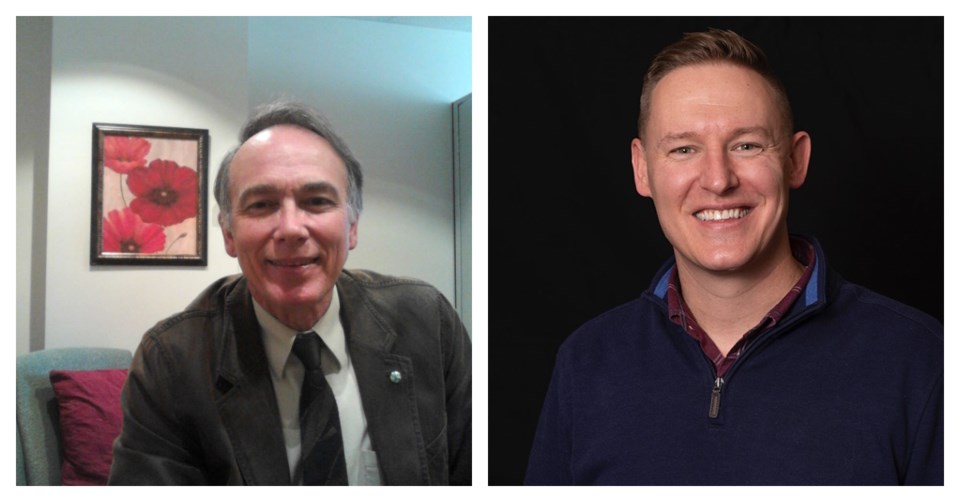Before COVID-19, Longmont’s hospital chaplains often pulled up to the bedsides of patients offering counseling and prayer, sometimes holding the hands of victims of traumatic injuries or fatal diseases.
Now chaplains are forced to retreat into hallways and behind masks, doors and safety glass. From there, it’s not always easy to reach through the protective barriers to ease the physical and emotional hurt inflicted on COVID patients, said Bruce Rippe, a veteran chaplain at UCHealth Longs Peak Hospital.
Rippe’s limitations hit him especially hard in the early days of the pandemic, when he telephoned an 88-year-old COVID patient from a hallway at the hospital and asked her how he could help her.
“She said ‘You can come into my room and see me and hold my hand.’ That just tore at my heart. The one thing she asked me to do and I wasn’t able to do it.”
COVID-19 has forced chaplains to try new ways to support patients, either by telephone,iPads or message boards, said Gary Brndiar, lead chaplain at Longmont United Hospital.
“I have had to adapt to provide the best patient care that I can,” Brndiar said.
He describes himself as a member of a caregiving team at LUH that supports patients and often their families and friends.
But, Brndiar said, the usual approaches to aid patients have been upended during the pandemic. Restrictions erected to shield patients from the virus have isolated families and people in the hospital trying to help them.
“Some of the family members may have COVID, so they themselves may be in isolation,” Brndiar said. “It’s disorienting. It’s fragmented. In any other situation we would all be in the same room together and right next to a patient at their bedside. We could partner and hear the concerns of the family.”
“All of that,” Brindiar said, “has been disrupted.”
The best he can do, Brindiar said, is be there for patients who have no one else to talk to while they fight the virus.
“I have the honor to listen as they vocalize their hopes and wishes and I like to think I’ve contributed to their care,” 39-year-old Brindiar said.
Seventy-year-old Rippe has been a hospital chaplain for 41 years and like Brndiar has been trained to counsel patients of diverse religious callings, including those who say they don’t believe in a higher power.
“We have to properly address the spiritual and emotional needs of all different backgrounds,” Rippe said.
He has worked in critical care units and offered help to those suffering from heart attacks and strokes
“Oftentimes these are situations that often end with poor outcomes,” Rippe said. “Chaplains are trained to step into these situations and do what we can for families.”
COVID-19, however, is different since it isolates patients for days, weeks and even months, he said. Worse yet, there is no guarantee long-term COVID patents will recover.
“These patients are isolated from their support systems,” Rippe said. “They are seriously ill and sometimes those patients end up on a ventilator for support and they still become worse and worse. That’s incredibly frightening for everyone.”
After 10 months of COVID, Rippe said he still has not figured out why some patients survive the deadly virus and others do not.
“I’ve had people call me after they recovered and they tell me ‘I didn’t think it was going to make it,’” he said.
Somewhere along the course of their treatment, something changed for them that helped them overcome the virus, Rippe said. “It was maybe a conversation they had with a physician or nurse or with me. But something shifted and the whole course of their lives changed.”
“After all this time, it still confounds me,” he said.
Both Rippe and Brndiar also lend support to the doctors, nurses and other emotionally drained medical personnel who often watch patients struggle and ultimately die from COVID.
“They realize the chances of their patients surviving lessen with each passing day,” Rippe said. “It becomes a burden for them emotionally to recognize they have done all they can, but in their own minds it’s not enough.”
“But it’s an honor to work with everyone on these teams of caregivers,” he said. “They do their work, day after day, shift after shift. They just keep going.”



